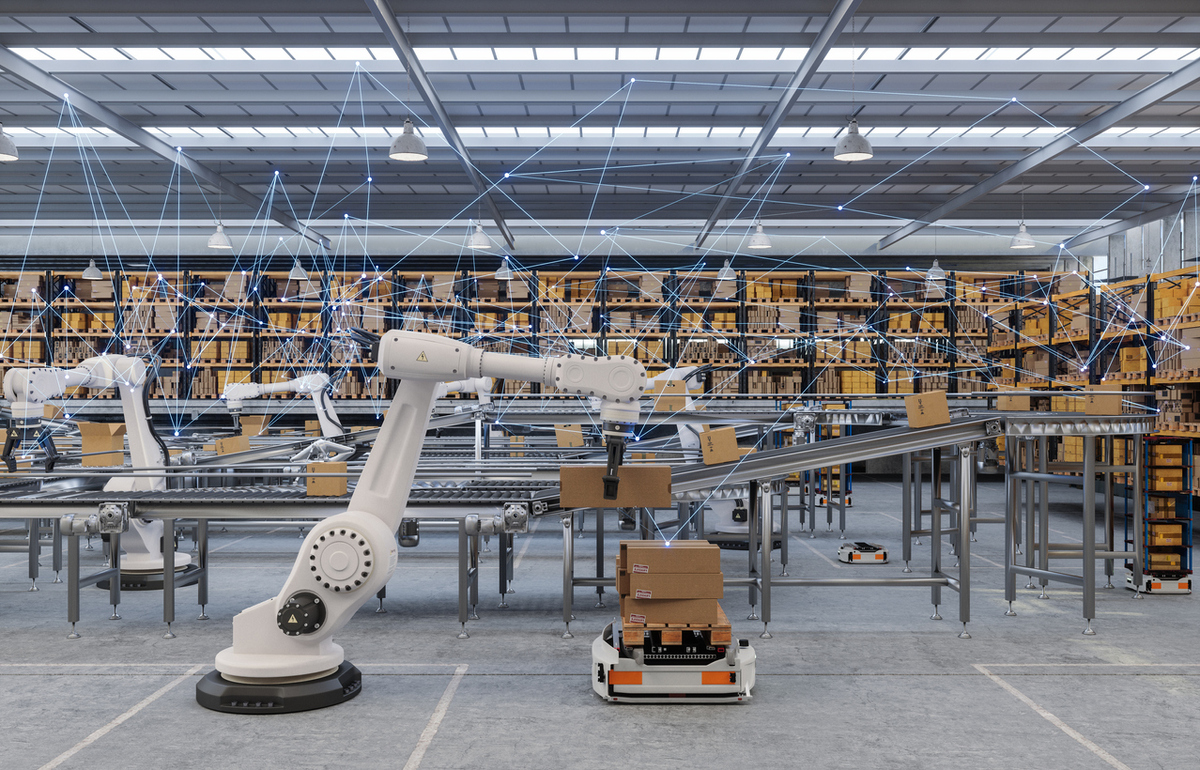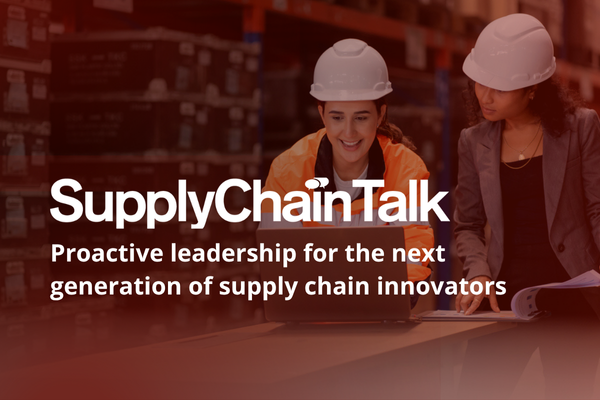AI and automation in the supply chain

In recent times, supply chains have faced serious challenges. A sudden growth in e-commerce stimulated by Covid has combined with the disruptive effects of war, including a rapid rise in energy costs. And at the same time business philosophies have been changing: onshoring is becoming fashionable while sustainability is increasingly a fundamental necessity.
In the face of these issues, artificial intelligence (AI) is increasingly being used to automate supply chain and logistics operations, reducing costs, optimising inventory levels and expediting delivery times. Indeed some would even argue that AI has the potential to transform supply chains into self-learning systems that can manage logistics workflows with only minimal human intervention.
The successful use of AI in supply chains can have major impacts on businesses. McKinsey estimates that AI has helped businesses improve logistics costs by 15 per cent, reduce inventory levels by 35 per cent and improve service levels by 65 per cent. In contrast, the cost of AI systems, and the technology that attaches to them, such as robots and self-driving vehicles, is constantly falling.
Demand forecasting and inventory management
AI is particularly powerful as a way of detecting hidden patterns in large quantities of data. In the logistics sector, it can be used to analyse historic data and customer trends, matching these against economic and social factors to produce highly reliable demand forecasts. This helps organisations avoid both overstocking and understocking.
As well as providing robust analysis, AI can be used to improve the efficiency of supply chains. Inventory levels can be tracked across multiple locations and potential bottlenecks can be identified, making it easier for humans – or other AI machines – to decide where to allocate inventory. This is an advance that can transform e-commerce as well as high street retail.
AI-powered demand forecasting also facilitates dynamic pricing, where the price of a product responds to changes in demand, supply, competition, price and even things such as the weather or social sentiment. And by analysing customer data in real time, pricing systems can respond to local and global demand fluctuations with immediate price adjustments.
AI tools for forecasting demand will generally need to be supervised by humans. The data that the tool uses may be incomplete or the recommendations and forecasts made may be unreliable for some reason. This is why human-machine teaming is very important. People need to be able to work with AI systems, having the willingness to implement AI-powered decisions they are happy with, but also having the confidence to take a different decision if the AI systems outputs seem untrustworthy.
Automated warehouse operations
Once the optimal quantity of products arrives in the warehouse, AI can be used to increase the efficiency of operations – for example, by creating more optimised warehouse layouts or planning time-saving picking routes. AI-powered robots can be used to automate tasks such as unloading trucks and moving inventory and when orders come through they can be used for picking, packing and loading. Profits can be bolstered by a reduction in damaged and lost goods that are handled by careful robots. And computer vision can be used to detect instances of possible theft before goods leave the warehouse.
Automation can also result in reduced labour costs, although it is more likely to instead reduce the pressure many organisations are currently experiencing from skills shortages.
The use of “cobots” (flexible robots designed to collaborate with humans) in warehouses is particularly significant. These are not designed to replace workers. Instead they can reduce human downtime or wasted movement as a way of boosting productivity, as well as reducing the risk of workplace accidents – for instance, by handling picking in high or inaccessible locations or for the heaviest items.
Cobots can also be used for quality control, using computer vision to identify goods that have been damaged or packed badly. Perhaps even more significantly, cobots can help free up human operators from repetitive jobs (which lend themselves to automation) so that those humans can focus on jobs that add greater value. These could vary from packing delicate items through to data analysis
Another benefit of AI is a reduction in warehouse admin costs. Documents and emails can be processed automatically, queries about stock availability answered automatically, and management reports generated more quickly and accurately than by a human working on their own..
Transportation and exporting
AI can transform transport planning. Transportation routes, methods and schedules can be optimised taking into account factors such as traffic conditions, local hazards, weather and fuel costs. And depending on the cargo, speed can be balanced with safety.
By optimising transportation routes damage to inventory can be reduced, while at the same time vehicle servicing costs can be decreased and fuel efficiency increased. And this of course can assist with important sustainability goals.
A problem for exporters is often customs declaration. Paperwork can be complex and costly to complete. Mistakes are frequent delaying shipments. However, AI can extract essential information from trade documents, check data accuracy, and quality check product descriptions and photos, while at the same time spotting smuggling, theft, misdeclarations and invoice fraud.
Looking to the future
AI technology is moving fast. One area that is evolving particularly rapidly is that of autonomous vehicles, including drones. The use of these devices will speed up logistics massively, increase road safety and lower costs. Drones especially, with their ability to fly over traffic hold ups, will be highly significant.
AI-driven supply chain automation increasingly provides many benefits including stronger planning and increased resilience to market volatility, higher performance levels and reduced costs. By leveraging AI, organisations can increase supply chain efficiency and resilience, and enhance the speed and strength of decision-making.
Overall efficiency will be increased and ultimately customer satisfaction will be increased. Through the use of AI, the logistics function can play a central part in the success of any business.

Jeremy Swinfen-Green
Most Viewed
Winston House, 3rd Floor, Units 306-309, 2-4 Dollis Park, London, N3 1HF
23-29 Hendon Lane, London, N3 1RT
020 8349 4363
© 2025, Lyonsdown Limited. Business Reporter® is a registered trademark of Lyonsdown Ltd. VAT registration number: 830519543





